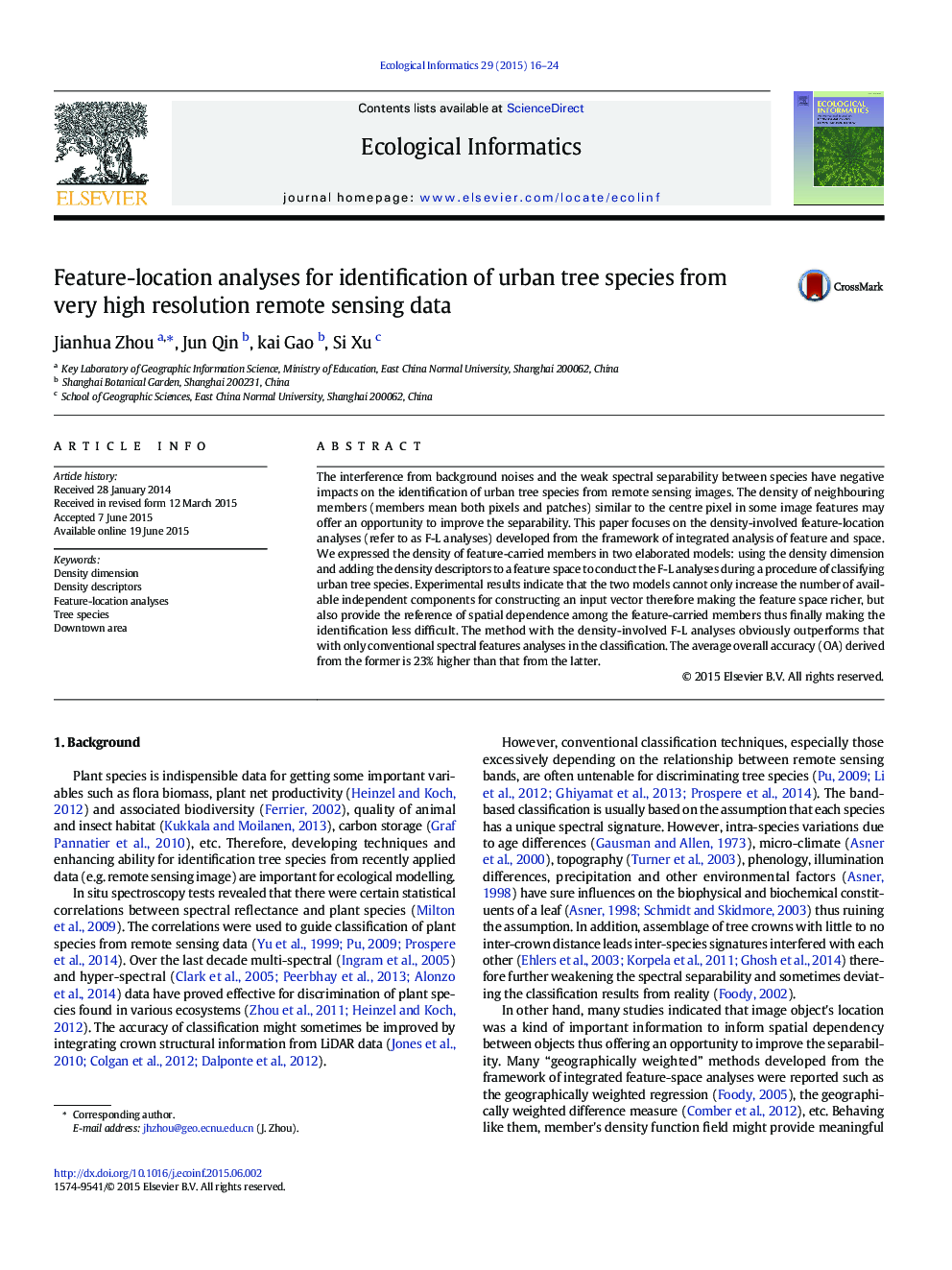| Article ID | Journal | Published Year | Pages | File Type |
|---|---|---|---|---|
| 6295865 | Ecological Informatics | 2015 | 9 Pages |
Abstract
The interference from background noises and the weak spectral separability between species have negative impacts on the identification of urban tree species from remote sensing images. The density of neighbouring members (members mean both pixels and patches) similar to the centre pixel in some image features may offer an opportunity to improve the separability. This paper focuses on the density-involved feature-location analyses (refer to as F-L analyses) developed from the framework of integrated analysis of feature and space. We expressed the density of feature-carried members in two elaborated models: using the density dimension and adding the density descriptors to a feature space to conduct the F-L analyses during a procedure of classifying urban tree species. Experimental results indicate that the two models cannot only increase the number of available independent components for constructing an input vector therefore making the feature space richer, but also provide the reference of spatial dependence among the feature-carried members thus finally making the identification less difficult. The method with the density-involved F-L analyses obviously outperforms that with only conventional spectral features analyses in the classification. The average overall accuracy (OA) derived from the former is 23% higher than that from the latter.
Keywords
Related Topics
Life Sciences
Agricultural and Biological Sciences
Ecology, Evolution, Behavior and Systematics
Authors
Jianhua Zhou, Jun Qin, kai Gao, Si Xu,
